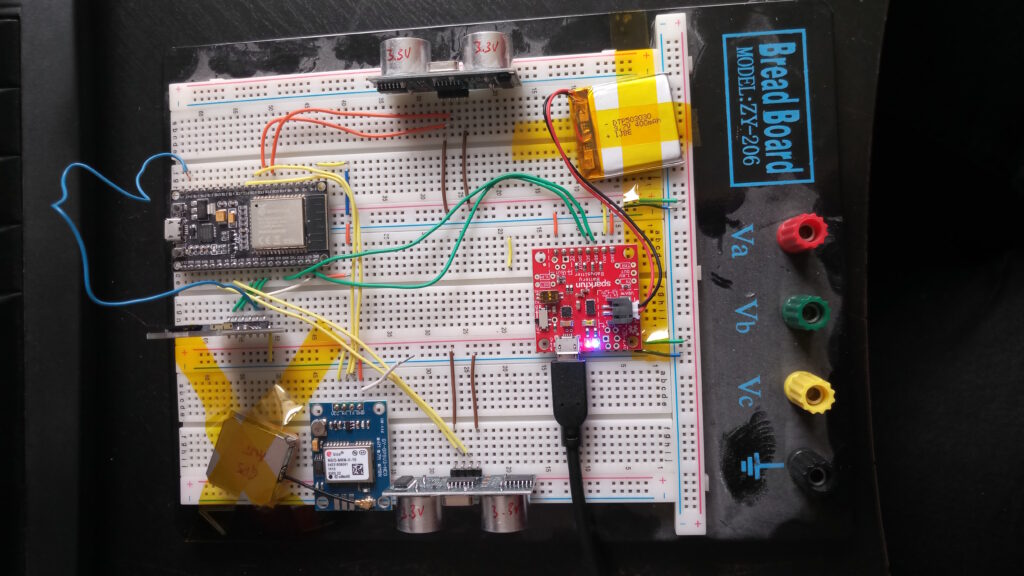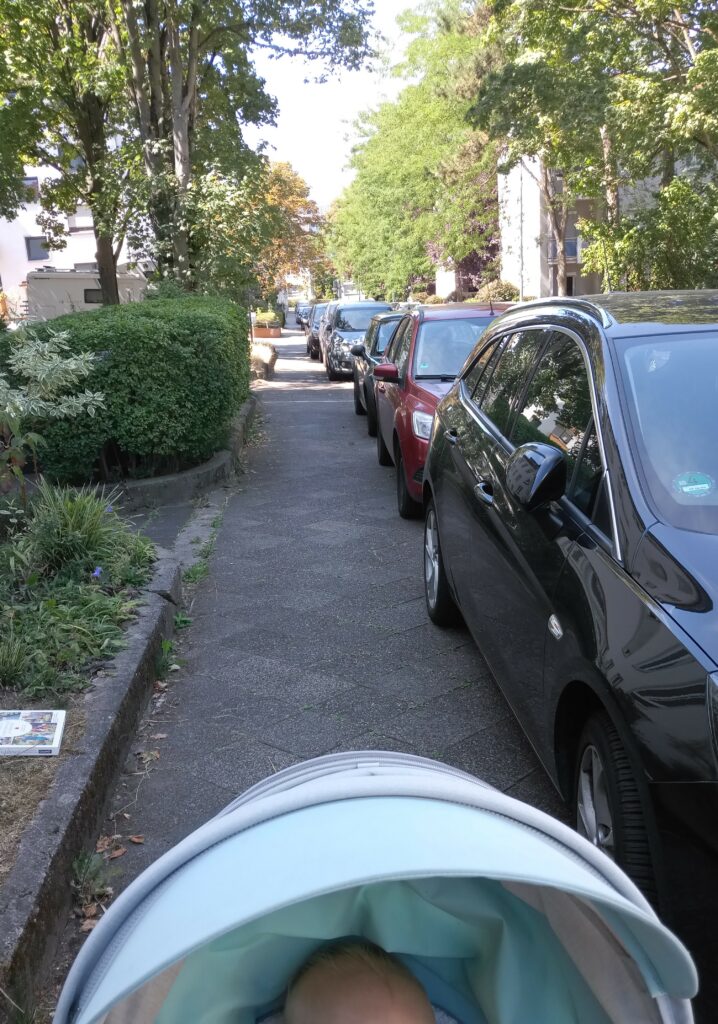Beobachtung 1: Die Akw-Debatte ist nicht vorbei. Die halbe FDP träumt vom Wiedereinstieg (von der CDU mal ganz zu schweigen). Die Verlängerung jetzt wird dort als Dammbruch gesehen.
Beobachtung 2: Die Verlängerung nicht zu wollen hilft der #Energiewende kein Iota. Unsere Energieinfrastruktur ist ein riesiges, komplexes System, das sehr, sehr lange Antwortzeiten auf Änderungen hat. Deswegen braucht es langfristige (20+ Jahre) Konsense, die nicht alle naslang wieder geändert werden (egal was die konkrete Richtung nun ist, das will ich hier gar nicht bewerten).
Beobachtung 3: Mich erinnert die Akw-Debatte massiv an die französische Präsidentschaftsdebatte 2007 zwischen Royale und Sarkozy, bei der in einigen sehr, sehr peinlichen Minuten im Fernsehen klar wurde, dass niemand im Studio (weder die Kandidat:innen noch die Moderator:innen) wussten, wovon sie da eigentlich sprachen. Wir führen derzeit öffentlich eine ähnlich uninformierte Debatte. Da wird Zeugs durcheinander geworfen, es werden irgendwelche Gutachten für irgendwelche Meiler gemacht und rumgeworfen (egal, was eigentlich genau drinsteht), es wird x Mrd. Tonnen Benzin mit x TWh Uranstrom verglichen.
Für ne angebliche technologische Gesellschaft sind wir ziemliche Amateure. Die Zunft der Energietechniker tut sich da gerade auch nicht besonders hervor: Sie scheint gespalten und die Altvorderen Großanlagen-Fans scheinen mit der jüngeren Agile-Netze-Fraktion nicht viel zu sprechen. Mag aber nur mein Eindruck sein.
Insofern kann man eigentlich nur sagen: Wer immer bei der Energiepolitik irgendwelche kurzfristigen Absichten verfolgt, handelt vollkommen verantwortungslos. Das gilt für Merkels (CDU btw) Ausstieg aus dem Ausstieg (A²), für Merkels Ausstieg aus dem Ausstieg aus dem Ausstieg (A³), und für die aktuelle Debatte, wo ironischerweise Grüne und FDP auf der falschen Seite stehen.
Man könnte der FDP noch zugute halten, dass sie ja in Wirklichkeit wieder langfristig zurück zum Atom wollen. Dass sie dafür aber keinen gesellschaftlichen Konsens haben, zaubern sie einfach aus ihrem Bewusstsein.
Bei der Pandemie haben wir’s irgendwie geschafft, wengistens ein wenig Ruhe und Informiertheit in die Debatte zu bringen (wenn man an der richtigen Stelle geschaut hat).
Wie kommen wir da raus?
Schritt 1: Etabliere einen breiten Konsens, dass wir aus allen fossilen Energieträgern so schnell wie möglich rausmüssen.
Schritt 2: Etabliere einen Konsens über die Kosten des einzuschlagenden Weges.**
Schritt 3: Arbeite den Weg aus und lege ihn mit Prüf-Meilensteinen auf 20 Jahre fest.
Oh, und btw: Das hab ich mir nicht ausgedacht. Das stand schon fucking 1987 im Brundland-Bericht.
Da kann in Schritt 2 oder 3 drinstehen, dass die Akw noch 5 Jahre weiterlaufen. Aber es muss auch a) klar sein, wo der Brennstoff herkommt (Russland ist ein Big Player in dem Bereich, shaise was?) und b) die aktuell noch stehenden Akw sind irgendwann einfach durch und müssen ausgeschaltet werden.
Es muss in den Meilensteinen auch festgelegt werden, wie deren Abschaltung dann kompensiert werden wird. Es darf dann nicht in 5 oder 10 Jahren einen Altmeier geben, der andere, bereits festgelegte Meilensteine einfach umwirft oder wie Wissing einfach ignoriert.
Die Grünen agieren bei Atomkraft nicht kühl. Ihre Ablehnung enthält eine rationale Komponente, aber eben auch ne Menge irrationalen Quatsch wie bei der Zustimmung zur Homöopathie.
- Ja, man kann Akw hinreichend sicher betreiben.
- Nein, wenn es knallt wäre das nicht Fallout 2. Sorry, Grüne.
- Aber ja klar, wir haben uns keine Sekunde ernsthaft Gedanken gemacht, wie ein Fukushima in Europa oder Deutschland aussehen würde. Es wären Hundertausende umgesiedelte Haushalte und ein Kostenberg von aktuell geschätzt über 150 Mrd. €.
- Ja, Atomkraft ist keine unendliche Energiequelle. Aber es geht nicht um die Menge des verfügbaren Brennstoffes. Auch Kohle würde ja noch ziemlich lang reichen. Uran ist aber eine Energiequelle, die man durch Logistiknetze bezieht. Mit Playern, die Interessen haben. Bei deren Quellen man sich genauso diversifizieren muss wie wir das beim Gas gesehen haben, sonst hat einer einen am Sack.
- Und nein, Erneuerbare sind nicht kostenlos; sie müssen noch gebaut werden und müssen auch gewartet werden. Aber a) fällt die Brennstofffrage weg und b) schöpfen wir in Europa unser Potential noch nicht mal ansatzweise aus.
Soweit zum Grünen-Bashing. Aber das sind halt nicht die einzigen Irrlichter: Hey, FDP und CDU, ich hoffe, ihr habt jetzt schon kapiert, dass Kernkraft nicht russlandfrei ist.
Und ja: Es fehlt an Speichern. Aber statt hier echte Forschungs- und Industriepolitik zu betreiben und Entwicklung und Fertigung in Europa aufzubauen, hat man* das Heft einfach komplett aus der Hand gegeben (hier dürfen sich CDU- und CSU-Politiker nicht nur mitgemeint fühlen). Nicht nur in Sachen Fertigung. Auch in Sachen Rohstoffe und mittlerweile auch in Sachen Technologie.
Ironischerweise ist dabei immer mit dem Standort* Deutschland argumentiert worden (*: Wirtschafts-, Technologie-). Jo, also den haben wir in Energiefragen ziemlich schlecht aufgestellt. Danke für nix.
Wir sind an nem Punkt, wo es gut wäre, statt sich schrille, heisere BS-Tweets an den Kopf zu werfen, all die o.g. Schritte durchzugehen und eine langfristige Strategie zu entwerfen.
Nicht Plan.
Strategie.
Unter Einbindung der gesamten EU.
Und ein guter Ort dafür wäre übrigens nicht Twitter-Deutschland. Aber so z.B. der fucking Bundestag!
Aber offen gestanden halte ich das Problem für so groß, dass wir subsidiär mit den EU-Mitgliedsstaaten auf der falschen Ebene sind. Es ist ein Mehrebenenproblem, aber die Strategie für sowas entwickelt man dann nicht 27-mal in den MS-Parlamenten. Sondern z.B. im EP, der KOM und, ja auch, im EUCO.
Und huch (Lichtblick): es gibt ja durchaus ein Framework auf EU-Ebene. Vielleicht hört man also mal auf, es andauernd zu blockieren, formuliert (die durch berechtigte) Kritik, nimmt sich die Zeit, zu erklären, was man vorhat, und macht es dann.
**) Ich habe bewusst das Thema Kosten soweit ausgespart, wie es nur geht, denn Schritt 1, der Ausstieg aus dem Fossilen, ist oberste Prämisse. Die Kostendiskussion ist in meinen Augen eine, die man nicht ernsthaft führen kann. Sie ist äußerst komplex und in einer öffentlichen Debatte nicht wirklich zu fassen. Und damit lässt sie Tür und Tor offen, in Geiselhaft genommen zu werden: Für eine lämende Klein-Klein-Debatte mit Scheinargumenten und viel Rauch.




